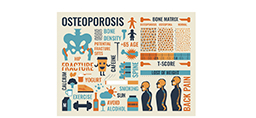
Aging baby boomers are getting bum knees replaced at a greater rate, and at a younger age, than ever before, a new U.S. study confirms.
The data, from the National Hospital Discharge Survey, shows that between 2000 and 2010, more than 5.2 million total knee replacements were performed in the United States. By 2010, the operation had become the leading inpatient surgery performed on adults aged 45 and over.
The rate at which middle-aged and older Americans got their knees replaced almost doubled over the years covered by the study, for men and women, the researchers found.
People aren’t putting off the procedure for as long, either. In 2000, the average knee replacement patient was about 69 years old, but by 2010 that age had dropped to just over 66, the findings showed.
One expert said there’s been a change in doctors’ and patients’ attitudes toward the timing of knee replacement.
“In the past, the trend amongst orthopedic surgeons was to delay performing a joint replacement on a patient until a person was so hindered by their joint pain that they were nearly incapacitated in their activities of daily living,” said Dr. Neil Roth, an orthopedic surgeon at Lenox Hill Hospital in New York City.
However, “that philosophy has evolved,” he said, so that nowadays surgeons “perform joint replacements sooner, to prevent physical deterioration and deconditioning, and to try to maintain activity levels.”
Our Take
C. Christopher Sherry, DO, an orthopaedic surgeon and joint replacement specialist at Spectrum Health Medical Group, said we are definitely seeing a surge in the population of patients who are in need of both knee and hip replacement surgery.
Within that population, there’s a trend toward younger patients seeking joint replacement surgery.
“The projections support an exponential growth of knee and hip replacement surgeries performed over the next 20 years,” Dr. Sherry said. “The technology associated with knee and hip replacement surgery is improving, as well as a change in patients’ attitudes toward joint osteoarthritis.”
Patients are not willing to be sedentary secondary to osteoarthritis, he noted, nor are they willing to change their lifestyles. Patients want joints that let them do what they want and that help them return to their normal lifestyles.
“They want their lives back and they are not willing to accept disabling pain associated with osteoarthritis,” Dr. Sherry said.
The technology and techniques used for knee and hip replacement surgery are improving and these improvements are resulting in better outcomes from the surgical procedures. Doctors feel more confident in the techniques and technologies associated with joint replacement surgery. Joints are lasting longer and doctors are more comfortable with the longevity.
Secondary to this improvement of longevity, doctors are willing to consider replacement surgery in the younger population.
Still, even with the advances in technology associated with joint replacement surgery, Dr. Sherry said most specialists still consider joint replacement surgery as the last step in the treatment process, after conservative measures have failed.
The new study was led by Sonja Williams of the U.S. Centers for Disease Control and Prevention’s National Center for Health Statistics (NCHS) and published in the September issue of the NCHS Data Brief.
Looking over the data, her team also noted a gender gap in knee replacement rates, with women significantly more likely to get a new knee compared to men. In 2010, about 65 of every 10,000 women aged 45 or older got a knee replacement, the research showed, compared to about 45 of every 10,000 men of similar age.
Why is the operation becoming more popular for both genders? According to Roth, aging boomers are demanding more mobility as they age.
“People want to remain active longer, well into their 8th and 9th decades of life, and painful joints are not conducive to remaining active,” he said.
Joint replacements are getting better, too, he added.
“Technologically, the longevity of knee and hip implants has also improved, lasting sometimes up to 15 years or longer,” Roth said. “While that still may necessitate revision surgery for those patients in the younger age groups, 45 to 64, it may not require two revision surgeries.”
Also, “the surgeries are more sophisticated now,” Roth said, “especially with the use of [surgical] navigational systems, as well as custom-made knee and hip replacements.”
The bottom line, he said, is that “all of these factors have led to an increased utilization of joint replacements for those needing them at an earlier age and has put aside the mantra of ‘waiting until you can’t take it any longer.'”
Roth stressed that these procedures remain invasive and complex, are not without risk, and shouldn’t be taken lightly. “Joint replacement surgery is still a major surgical procedure with significant risks, such as blood clots, infection and loss of motion,” he said.
Dr. Eric Grossman is co-director of joint replacement surgery at Northern Westchester Hospital in Mount Kisco, N.Y. He agreed that the rise in joint replacement has largely been based on patient demand.
“Patients today are unyielding in their desire to continue to be active and maintain a physically vivacious life,” Grossman said. “For patients with severe, debilitating arthritis, a total knee replacement can reliably achieve significant improvements in a patient’s pain and functional level, including returning to walking, cycling, tennis, golf, and skiing among other activities.”
And there’s been one other improvement boosting uptake of the operation, he added.
“Hospital lengths of stay continue to decline as refinement of the rehabilitation is also improved,” Grossman said. “Patients used to be hospitalized for weeks. In some cases today the surgery is being done on an ambulatory basis, but most commonly patients stay in the hospital for just one to three nights.”
 /a>
/a>
 /a>
/a>
 /a>
/a>